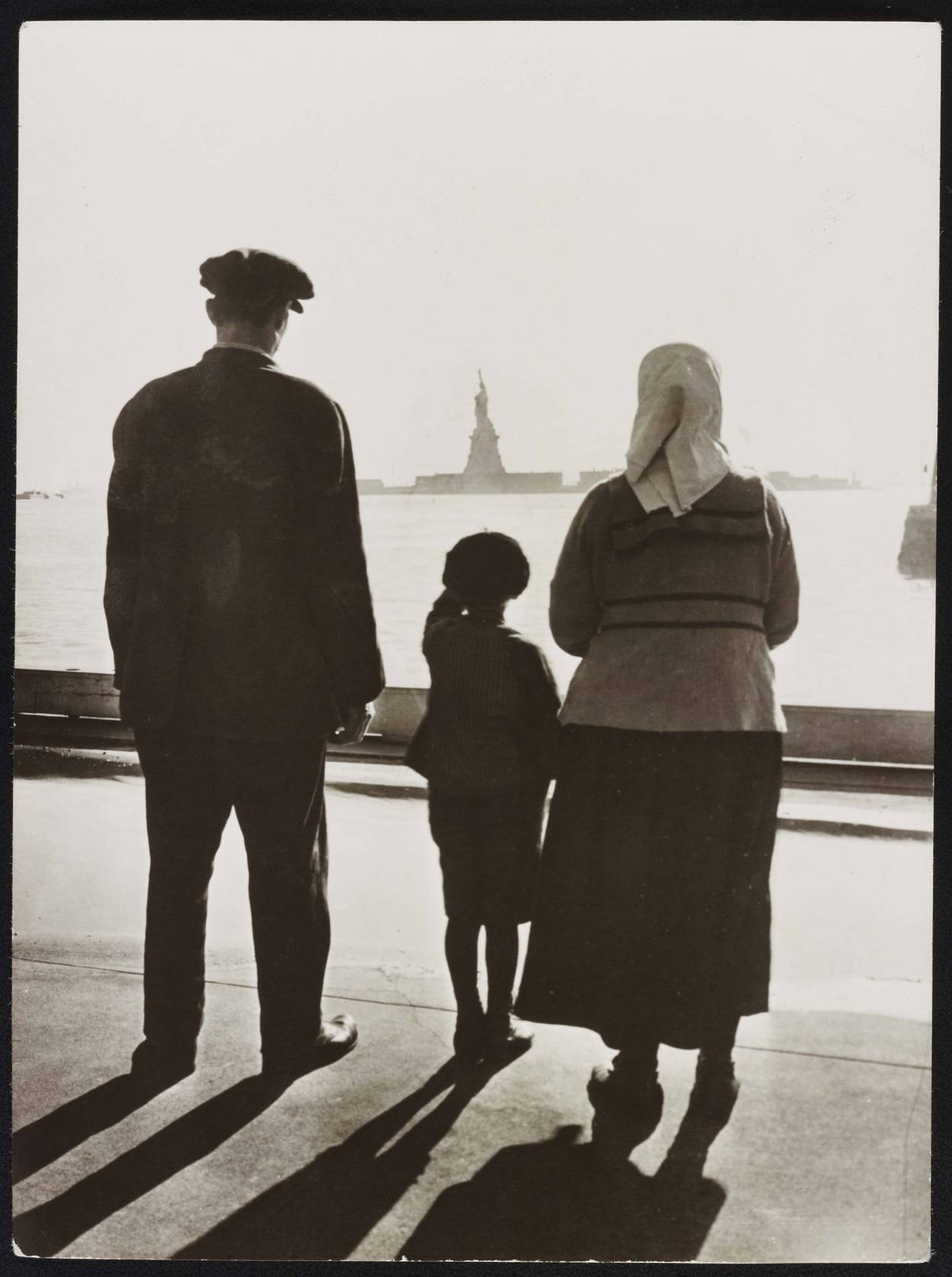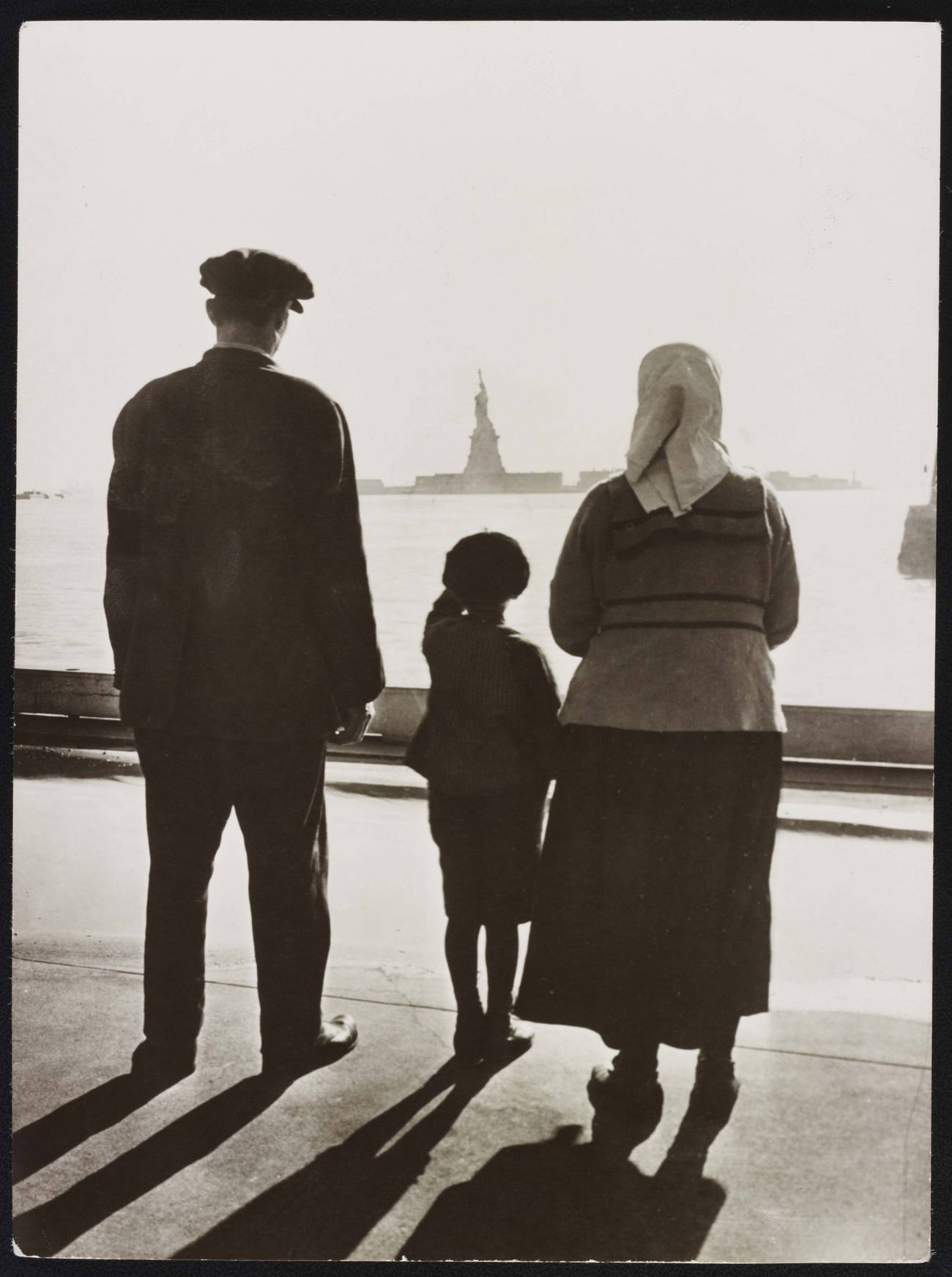My Grandparents’ Impossible Situation
Taking a new look at my family’s history, after watching Ken Burns’ PBS documentary ‘The U.S. and the Holocaust’




Though I didn’t realize it as a kid, there was something odd about my grandparents. The tall, craggy-faced man in the black cloth yarmulke was my grandfather, my mother’s father—with their shared large frames and light eyes there was no mistaking the biological connection. But what about the short lady with the headscarf and the iron leg brace whom I called Grandma, and my mother called Yulishka. Where did she fit in?
She was, my mother told me at a very young age, my step-grandmother. What had happened to my mother’s real mother, my real grandmother? Also at a very young age, probably too young, I knew that she’d been murdered by Hitler.
I also knew her name, the same as mine; Carol is an anglicization of Tzirel. I even knew what she looked like. My mother showed me the sepia-toned photographs of the unsmiling young woman in a flapper-style dress and cloche hat. Still, something didn’t add up. Grandpa had made it to Brooklyn. Why hadn’t my mother’s mother, his wife at the time, joined him there?
As a teenager, I squeezed the story from my mother—by this time Grandpa was long dead, and Yulishka confined to a nursing home. Like many survivors, my mother didn’t share her prewar memories, but I needed to know, and so during our long Shabbos afternoon walks up and down West End Avenue, I nudged her until she spoke.
Grandpa had arrived in New York illegally in 1930 when my mother was 5. My mother told me that had had “jumped ship.” The phrase connotes high drama, but my mother’s description was far more prosaic; Grandpa had taken a job on a ship—as what, I don’t know. Then, upon landing, he disembarked and disappeared into the city. On Ancestry.com I saw my grandfather’s name on the crew lists of two steamships that sailed from Europe to the U.S. in 1926. It seems he’d had made several trial runs, round-trip, before that final one-way voyage. But how did he sneak past the immigration officials at the port? Years after my mother shared her version, a cousin told me that Grandpa dove off the boat’s rail and swam into the Goldene Medine. He was 40 at the time.
Though some immigrants abandoned their European families, Grandpa sent his paltry earnings back home, and my grandmother sent photographs of my mother so that my grandfather would remember the daughter he left behind, as she grew up in his absence. Did they keep up a correspondence? I don’t know. Whatever letters they may have exchanged have been lost to time.
My memory is fuzzy on this, but I think my mother told me that Grandpa sent visas and boat tickets, but by the time my mother and her mother reached the port in Constanza, Romania, the war was on, and they couldn’t sail.
In 1944, my mother and grandmother were deported to Auschwitz. An avid reader of both Yiddish and English newspapers, Grandpa knew the danger his family faced. In a photograph taken during those years, he’s bone thin, his face deeply wrinkled, his eyes full of worry. That same cousin told me that whenever a family member went overseas to fight, my grandfather begged them to find his missing family.
That’s poignant enough to wet eyes and tissues, but it’s also troubling. Why didn’t my grandfather secure the visas earlier? Did his bumbling lead to my grandmother’s death?
For years I wondered about this, but watching the epic, six-hour-long documentary The U.S. and the Holocaust, directed by Ken Burns, Lynn Novick, and Sarah Botstein, I am certain that my grandfather did all he could in an impossible situation. Combining archival footage and testimonies from noted historians and Holocaust survivors, the film, which will air on PBS stations starting Sept. 18, makes a solid case that for Jews like my grandmother there was almost no way out of Nazi-occupied Europe. The U.S. immigration ban, codified in the nativist-inspired 1924 Johnson-Reed Act, nearly eliminated Eastern European immigration, laying the ground for disaster.
Ironically, the film points out that on its surface the law doesn’t seem directed at Jews—the word “Jew” is absent from its text. “There was no explicit quota for Jews, but it wasn’t an accident that recent Jewish immigrants had come from the Eastern European countries that now had minuscule quotas,” says the film’s narrator. In 1921, before the law, 120,000 Jews immigrated to the U.S. legally. Five years later that number had dropped to 10,000.
Not only that, but under the new law, immigration oversight was handed to the State Department, the federal government’s stodgiest and most antisemitic branch, described by the congressman and immigration advocate Emanuel Celler as having a “heartbeat muffled in the protocol.” Led by notorious antisemites Secretary of State Cordell Hull and his Assistant Secretary Breckinridge Long, the State Department set up a long list of seemingly impossible requirements. Immigrants needed to procure multiple copies of their birth certificates and letters vouching for their good citizenship—a near impossibility, historian Deborah Lipstadt explains in the film, correct for people escaping countries where they were hated.
Despite Emma Lazarus’ iconic poem at the Statue of Liberty, the law made no room for the tired the poor or even for war-torn refugees. “This law was based on the notion that immigrants were stupid Bolsheviks who were threatening America,” historian Nell Irvin Painter says in the documentary.
When my grandfather made his possibly soggy landing, restrictions grew even tighter. During the Depression years, the State Department demanded that would-be immigrants secure refundable $5,000 guarantees known as affidavits—a fortune in those days (roughly $100,000 in today’s dollars). “You couldn’t come if you had a job because then you’d be taking a job away from an American, but if you didn’t have a job you’d go on the dole,” says Lipstadt.
Though the fate of European Jews was hardly a secret—the film points out that the story was being told in both the Yiddish and English press and on March of Time newsreels at the movies—America remained closed.
“Public opinion strongly opposed the immigration of refugees and penniless Jews,” says Lipstadt. Even the shocking events of Kristallnacht failed to stir public support to relax the quotas. American xenophobia and antisemitism were so powerful that DAR and American Legion lobbyists killed a proposal to allow 10,000 Jewish refugee children to enter annually, its opponents decrying the “ugly children who would grow into ugly adults.”
When the U.S. entered the war, things actually got worse. Many Americans saw immigrants, including Jews fleeing Hitler, as potential fifth columnists forced to spy for the Reich to prevent their relatives from being shot. “Something else was always more important for the Americans than aiding Jews,” says historian Daniel Greene.
Still, the film posits that the U.S. admitted more Jews than any other country, a claim disputed by Holocaust historian Rafael Medoff, who argues that the British, French (before the Nazi occupation), and Soviets admitted more. I don’t know who is right, but this film’s message is clear—the documentary argues that the U.S. is at fault for failing to save more Jews.
In October 1944, one day after Simchat Torah, my grandmother was murdered in Auschwitz. In May 1945, my mother, by now a young adult, was liberated by the Red Army. Eventually, she reunited with her father and his new wife—they were married in 1948—in Brooklyn. Until her dying day, my mother never said a bad word about her new country, which had let her down during her moment of greatest need.
Coming from antisemitic Europe, my mother loved the U.S. It had given her a home where she could live in freedom and comfort. But a generation later, I am still angry: I believe that American immigration policies contributed to the murder of my grandmother.
“The Holocaust challenges what we could’ve and should have done,” says historian Rebecca Erbelding in the film. “It’s a story Americans have to reckon with.”
Carol Ungar’s writing has appeared in Next Avenue, Forbes, NPR, the Jerusalem Post Magazine, and Fox News. She also leads memoir writing workshops on Zoom.